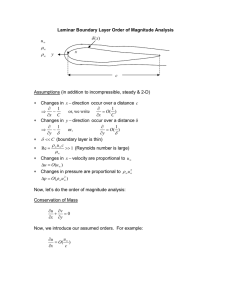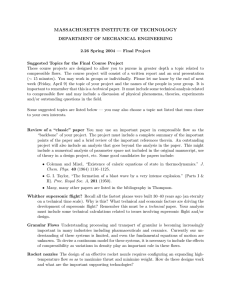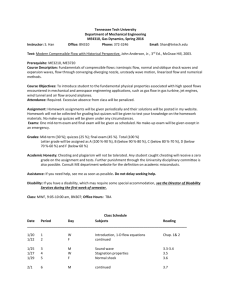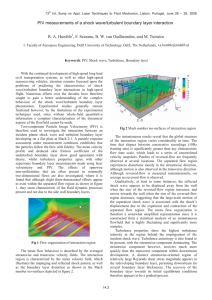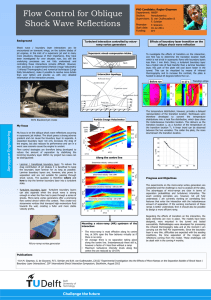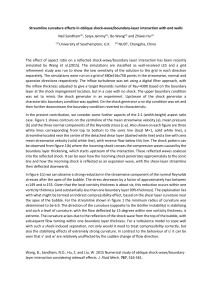Ph.D. Qualifying Exam - Fluid Mechanics Sample Exam 1 1
advertisement
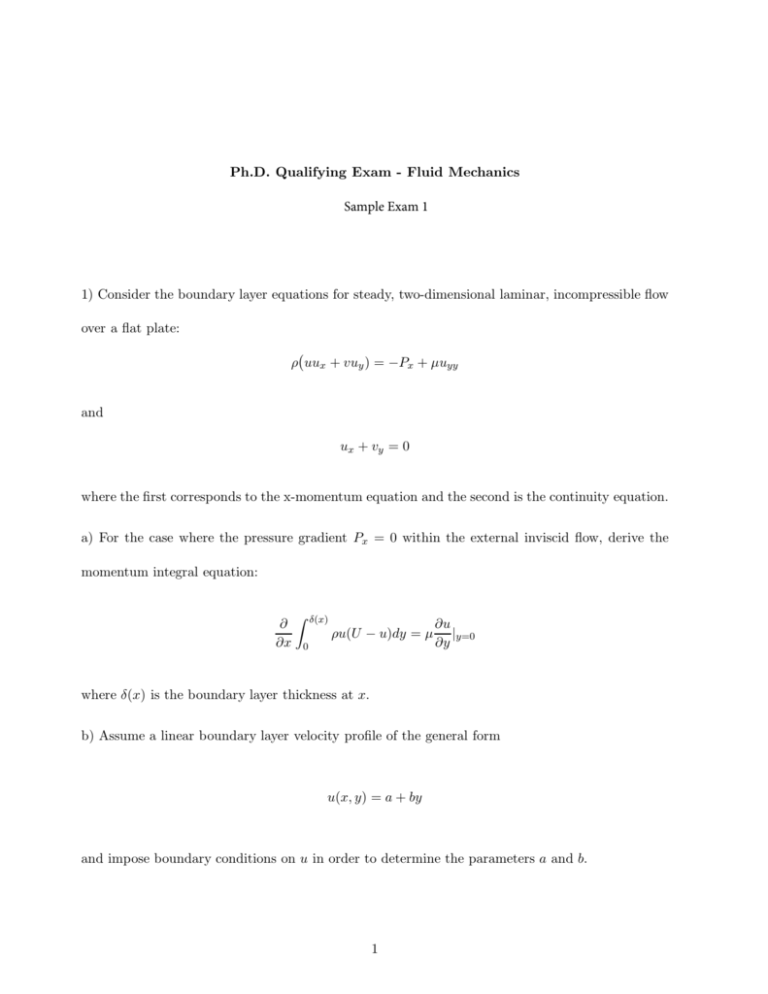
Ph.D. Qualifying Exam - Fluid Mechanics Sample Exam 1 1) Consider the boundary layer equations for steady, two-dimensional laminar, incompressible flow over a flat plate: ρ uux + vuy ) = −Px + µuyy and ux + vy = 0 where the first corresponds to the x-momentum equation and the second is the continuity equation. a) For the case where the pressure gradient Px = 0 within the external inviscid flow, derive the momentum integral equation: ∂ ∂x Z 0 δ(x) ρu(U − u)dy = µ ∂u |y=0 ∂y where δ(x) is the boundary layer thickness at x. b) Assume a linear boundary layer velocity profile of the general form u(x, y) = a + by and impose boundary conditions on u in order to determine the parameters a and b. 1 c) Using the profile determined in b), obtain an ordinary differential equation governing δ(x). 2 2) Consider unsteady laminar viscous flow within the vertical annular gap shown on the next page. For the two separate cases described below: i) Make reasonable assumptions regarding the velocity components and the dependence of these components on r, θ, and z; based on these assumptions, simplify the three momentum equations and continuity equation (which should be expressed in polar-cylindrical coordinates – see attached equation sheets). ii) Impose appropriate boundary conditions and an initial condition that would allow solution of each problem. Note, the models derived will be simple enough that analytical solutions could be obtained. However, do not attempt to solve the models you derive. In both cases, assume that the fluid is initially at rest. Case I: The outter cylinder begins rotating (at t = 0) at a constant rotational rate, Ω, while the inner cylinder remains fixed. Case II: The inner cyclinder begins translating at speed U (at t = 0) in the positive z-direction while the outter cylinder remains fixed. 3 R g 1 R2 z r 4 3) Consider the supersonic flow shown below. As indicated, an oblique shock is created at point A by a turning corner of angle θ1 . The shock created propagates to the upper wall where it reflects at point B. An upper turning corner having angle θ2 also begins at B. Let M1 = 3, T1 = 300 K, and p1 = 1 atm, and let θ1 = 14o and θ2 = 10o . Calculate the Mach numbers, temperatures, and pressures in regions 2 and 3. B θ 1 2 M1 P 1 T 1 θ A 5 1 3 2 4a) Consider a compressible flow passing through a normal shock. Write down the appropriate forms of the conservation of energy, linear momentum, and mass across the shock. Express in terms of the densities, ρ1 , ρ2 , velocities, u1 , u2 , pressures, P1 , P2 , and enthalpies h1 , h2 , that exist on each side of the shock. Do not attempt to manipulate these into the normal shock working equations (involving M1 and M2 ). b) Starting with the energy equation for one-dimensional compressible flow, ho = h + 12 u2 , derive the following working equation for 1-D isentropic compressible flow: To γ−1 2 =1+ M T 2 where the subscript o denotes stagnation conditions and where γ = cp /cv . Recall that cp − cv = R and that sound speed, a = √ γRT . 6
